
Roman Settlement at Kings Meadow Lane, Higham Ferrers

| Higham Ferrers Excavation Roman Settlement at Kings Meadow Lane, Higham Ferrers |
| Home | Events & Notices | Recent Discoveries | Publications | Links | How To Join | Contact Us |
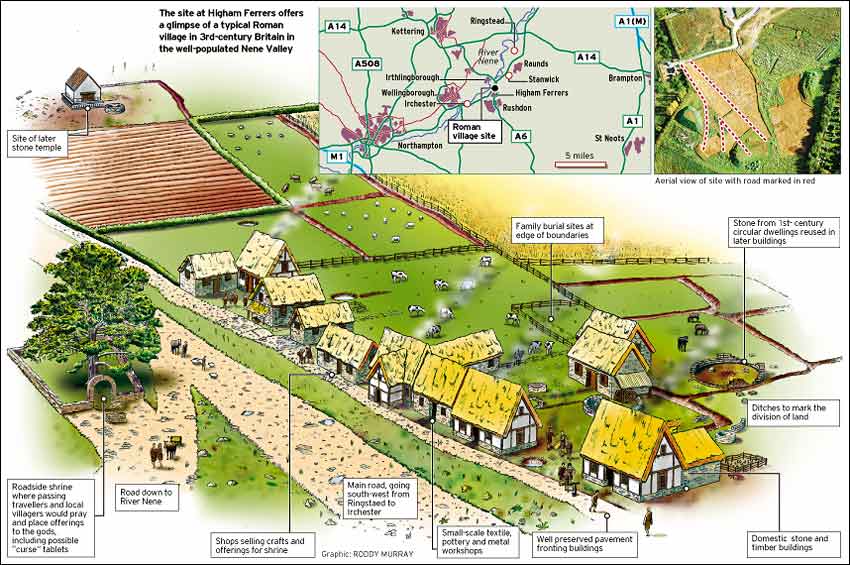
image courtesy of The Daily Telegraph
|
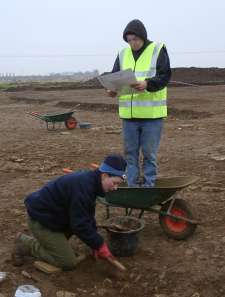
| The team of archaeologists from Oxford Archaeology have been excavating the large Roman settlement to the north of the current town of Higham Ferrers since the start of August. The excavation covers nearly 2 ha with the original size of the Roman settlement likely to have been more than double that. The remainders of this extend under the current housing of Meadow View. |
| Work carries on during public tours of the site |
| Excavated evidence suggests life at the settlement began early in the 2nd century AD with a clustered arrangement of circular houses at the southern end of the site with a road aligned roughly north-south along the western side of the settlement. Each of the buildings had stone foundations which supported wooden superstructures with probable thatched roofs and large fireplaces at the centre of each building providing light and warmth. Life was essentially still rather rural at this point although this was to change in the forthcoming century as the surrounding landscape became increasingly prosperous and densely settled. | 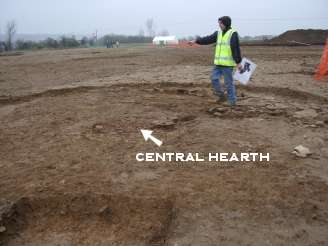
| |||||||
| Site of an early roundhouse;
shown by the circular trench. In the central area where there is a circular patch of reddish earth is the hearth. |
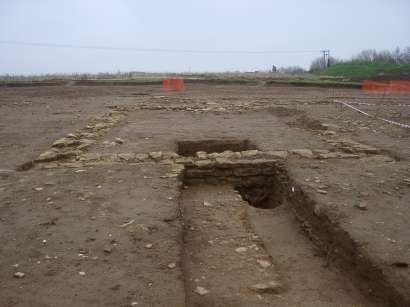
| The changes in settlement are dramatically demonstrated at Higham during the 3rd century. The site underwent a complete change in its fundamental layout with the grouped circular houses being replaced by newly built rectangular buildings stretching out along the length of the road with an accompanying gravel pavement. Each of the buildings was also set within its own rectangular plot of land defined by ditches. At the very northern end of the site a small temple stood in its own enclosure with a large 'village green' type open space adjacent to this. Oxford Archaeology excavated these in 2001. |
| Rectangular building with gravel pavement |
| Life continued throughout the 4th century when the settlement expanded to its largest size in its near four hundred year history. The majority of the buildings at the site are typical of domestic households containing everyday items such as pottery and bone waste from meals. More personal items include tweezers, brooches and hairpins carefully carved from bone fragments. Coins and the remains of iron weighing scales also paint a picture of everyday life buying and selling goods in, what must have been, a bustling settlement. |
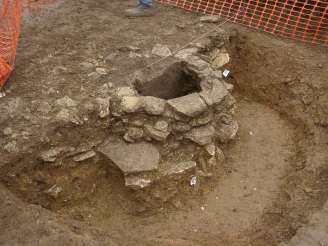
|
| Roman well |
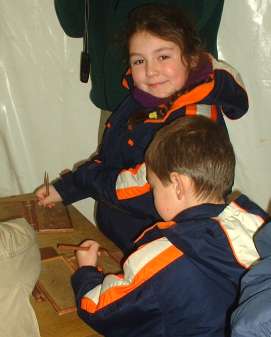
writing at the Higham Ferrers Open Day | The end of occupation within the buildings is marked by the arrival of the Saxons. It's very difficult in archaeology generally to show what happens at the end of the life of such a settlement. There was no catastrophe recognisable in the archaeology remains. It just appears that people stopped living here at the end of the 4th century or possibly even very early in the 5th century as the different lifestyle of the Saxons took hold. We have some evidence of this with the remains of early Saxon dwellings scattered across the vicinity of the site and some actually located between some of the former Roman buildings. However they did not use the remains of the Roman buildings and these fell into ruin soon after their abandonment. |